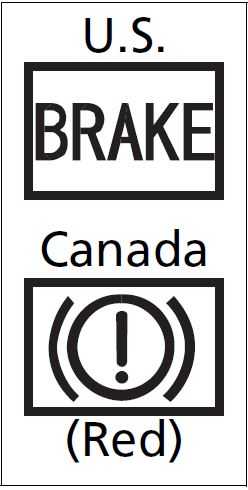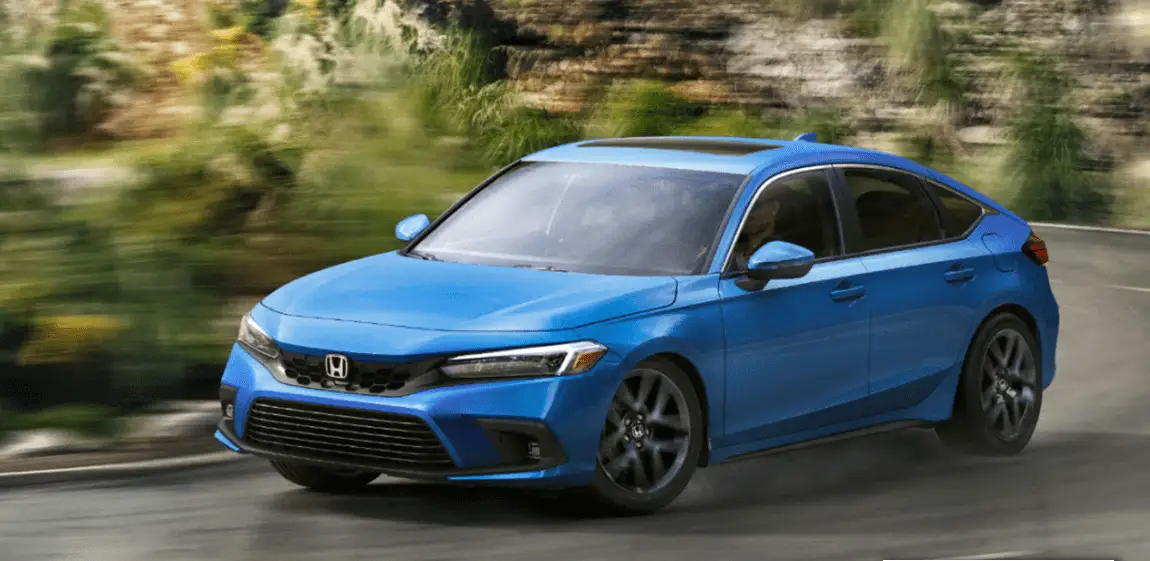2022 Honda Civic Hatchback Engine Overheating Owner’s Manual
The 2022 Honda Civic Hatchback is a chic and effective car that combines functionality and performance. Knowing how to successfully tackle overheating concerns is an important consideration when buying this model. A broken thermostat, low coolant levels, or a defective cooling system are just a few of the causes of overheating. In order to protect the engine and prolong the life of your car, overheating must be addressed right away. We’ll go over important actions and advice in this tutorial to assist you handle overheating in your 2022 Honda Civic Hatchback. Understanding the reasons for overheating and how to prevent it will help you keep your car operating at peak efficiency and dependability. Let’s explore the methods and approaches that work best for confidently and effectively resolving overheating problems in your Honda Civic Hatchback.
2024 Honda CIVIC HATCHBACK Specs, Price, Features, Mileage (Brochure)
How to Handle Overheating
Engine overheating solutions
Overheating symptoms are as follows:
Models with B-type meter
- The Car temperature gauge pointer is at the mark or the engine suddenly loses power.
- The Engine temperature is too hot. Do not drive. Allow the engine to cool. a message appears on the driver information interface.
- Steam or spray comes out of the engine compartment.
The first thing to do
- Immediately park the vehicle in a safe place.
- Turn off all accessories and turn on the hazard warning lights.
No steam or spray present: Keep the engine running and open the hood. Steam or spray is present: Turn off the engine and wait until it subsides. Then, open the hood.
WARNING
Steam and spray from an overheated engine can seriously scald you. Do not open the hood if steam is coming out.
NOTICE
Models with B-type meter
Continuing to drive with the temperature gauge pointer at the H mark may damage the engine.
All models
Continuing to drive with the Engine temperature too hot. Do not drive. Allow the engine to cool. message on the driver information interface may damage the engine.
Next thing to do
- Check that the cooling fan is operating and stop the engine once the Engine temperature is too hot. Do not drive. Allow the engine to cool. message on the driver information interface disappears. If the cooling fan is not operating, immediately stop the engine.
- Once the engine has cooled down, inspect the coolant level and check the Civic Hatchback cooling system diagnostics components for leaks. If the coolant level in the reserve tank is low, add coolant until it reaches the MAX mark. If there is no coolant in the reserve tank, check that the radiator is cool. Cover the radiator cap with a heavy cloth and open the cap. If necessary, add coolant up to the base of the filler neck, and put the cap back on.
Last thing to do
Once the engine has cooled sufficiently, restart it and check the driver information interface. If the Engine temperature is too hot. Do not drive. Allow the engine to cool. the message does not appear, resume driving. If it appears again, contact a dealer for repairs.
WARNING
Removing the radiator cap while the engine is hot can cause the Honda Civic Hatchback coolant to spray out, seriously scalding you. Always let the engine and radiator cool down before removing the radiator cap. If the coolant is leaking, contact a dealer for repairs. Use water as an emergency/temporary measure only. Have a dealer flush the system with proper antifreeze as soon as possible.
Honda Civic Indicator, Coming On/Blinking
If the Engine oil pressure is low Warning Appears
- Reasons for the warning to appear Appears when the engine oil pressure is low.
- What to do as soon as the warning appears
- Immediately park the vehicle on level ground in a safe place.
- If necessary, turn the hazard warning lights on.
- What to do after parking the vehicle 1. Stop the engine and let it sit for approximately three minutes.
- Open the hood and check the oil level.
- Add oil as necessary.
- Oil Check P. 649
- Start the engine and check the Engine oil pressure low warning.
- The warning disappears: Start driving again.
- The warning does not disappear within 10 seconds: Immediately stop the engine and contact a dealer for repairs.
NOTICE
Running the engine with low oil pressure can cause serious mechanical damage almost immediately.
If the Charging System Indicator Comes On![]()
- Reasons for the indicator to come on
Comes on when there is a problem with the charging system. - What to do when the indicator comes on
Stop in a safe place and have your vehicle checked by a dealer immediately. - If the Malfunction Indicator Lamp Comes On or Blinks.
If the Malfunction Indicator Lamp Comes On or Blinks

Reasons for the indicator lamp to come on or blink
- Comes on when there is a problem with the engine emissions control system.
- Blinks when engine misfiring is detected.
- What to do when the indicator lamp comes on
Avoid high speeds and immediately get your vehicle inspected at a dealer. - What to do when the indicator lamp blinks
Park the vehicle in a safe place with no flammable items and wait at least 10 minutes or more with the engine stopped until it cools.
If you need to stop temporarily, do not turn off the engine. Restarting the engine may rapidly discharge the battery.
NOTICE
If you drive with the malfunctioning indicator lamp on, the emissions control system and the engine could be damaged. If the malfunction indicator lamp blinks again when restarting the engine, drive to the nearest dealer at 31 mph (50 km/h) or less. Has your vehicle been inspected?
If the Brake System Indicator (Red) Comes On or Blinks
 Reasons for the indicator to come on
Reasons for the indicator to come on
- The brake fluid is low.
- There is a malfunction in the brake system.
What to do when the indicator comes on while driving Depress the brake pedal lightly to check pedal pressure.
- If normal, check the brake fluid level the next time you stop.
- If abnormal, take immediate action. If necessary, downshift the transmission to slow the vehicle using engine braking.
- Reasons for the indicator to blink
There is a problem with the electric parking brake system. - What to do when the indicator blinks
Avoid using the parking brake and have your vehicle checked by a dealer immediately.
Have your vehicle repaired immediately? It is dangerous to drive with low brake fluid. If there is no resistance from the brake pedal, stop immediately in a safe place. If necessary downshift the gears. If the brake system indicator (red) and ABS indicator come on simultaneously, the electronic brake distribution system is not working. This can result in vehicle instability under sudden braking. Have your vehicle inspected by a dealer immediately? If the brake system indicator (red) blinks at the same time when the brake system indicator (amber) comes on, the parking brake may not work. Avoid using the parking brake and have your vehicle checked by a dealer immediately.
If the Brake System Indicator (Red) Comes On or Blinks at the Same Time When the Brake System Indicator (Amber) Comes On P. 712.
If the Electric Power Steering (EPS) System Indicator Comes On
- Reasons for the indicator to come on Comes on when there is a problem with the EPS system.
- What to do when the indicator comes on
- Stop the vehicle in a safe place and restart the engine.
If the indicator comes on and stays on, immediately have your vehicle inspected by a dealer. - If Do not drive displays on the driver information interface, immediately stop in a safe place and contact a dealer.
If the Brake System Indicator (Red) Comes On or Blinks at the Same Time When the Brake System Indicator (Amber) Comes On
 If the brake system indicator (red) comes on or blinks at the same time as the brake system indicator (amber) comes on, release the parking brake manually or automatically.
If the brake system indicator (red) comes on or blinks at the same time as the brake system indicator (amber) comes on, release the parking brake manually or automatically.
- If the brake system indicator (red) continuously comes on or blinks at the same time as the brake system indicator (amber) comes on, stop the vehicle in a safe place and have it inspected by a dealer immediately.
- Preventing the vehicle from moving.
Continuously variable transmission models
Put the transmission into P.
Honda Civic Manual transmission models User manual
Put the transmission into 1 or R.
- If only the brake system indicator (red) is turned off, avoid using the parking brake and have your vehicle checked by a dealer immediately. Time When the Brake System Indicator (Amber) Comes On
If you apply the parking brake, you may not be able to release it. If the brake system indicator (red) and the brake system indicator (amber) come on at the same time, the parking brake is working. If the brake system indicator (red) blinks at the same time as the brake system indicator (amber) comes on, the parking brake may not work because it is checking the system. If you repeatedly operate the electric parking brake in a short period of time, the brake stops operating to prevent heating of the system and the indicator blinks. It returns to its original state in approximately 1 minute.
FAQ’s
The handle overheating in the 2022 Honda Civic Hatchback can be caused by various factors, including electrical malfunctions, excessive friction, or a faulty component.
The handle overheating issue may occur sporadically in some 2022 Honda Civic Hatchback models, but it is not considered a widespread problem.
Yes, if left unaddressed, the handle overheating in the 2022 Honda Civic Hatchback may lead to potential safety hazards or damage to the vehicle’s exterior.
Signs of handle overheating in the 2022 Honda Civic Hatchback may include unusual warmth or hotness when touched, discoloration, or visible damage.
Yes, the handle overheating problem in the 2022 Honda Civic Hatchback can typically be resolved by diagnosing and repairing the underlying cause, which may involve replacing faulty components or addressing electrical issues.
Depending on the specific circumstances and warranty coverage, the handle overheating issue in the 2022 Honda Civic Hatchback may be eligible for repairs or replacements under the vehicle’s warranty.
In some cases, aftermarket modifications or accessories may impact the performance or electrical systems of the 2022 Honda Civic Hatchback, potentially contributing to handle overheating issues
Honda dealerships and authorized service centers may provide solutions or remedies for the handle overheating problem in the 2022 Honda Civic Hatchback, including diagnostic checks, repairs, or replacements as necessary.
Useful Links
View Full User Guide: Honda Civic Hatchback 2022 User Manual | Auto User Guide
2024 Honda CIVIC HATCHBACK Specs, Price, Features, Mileage (Brochure)


